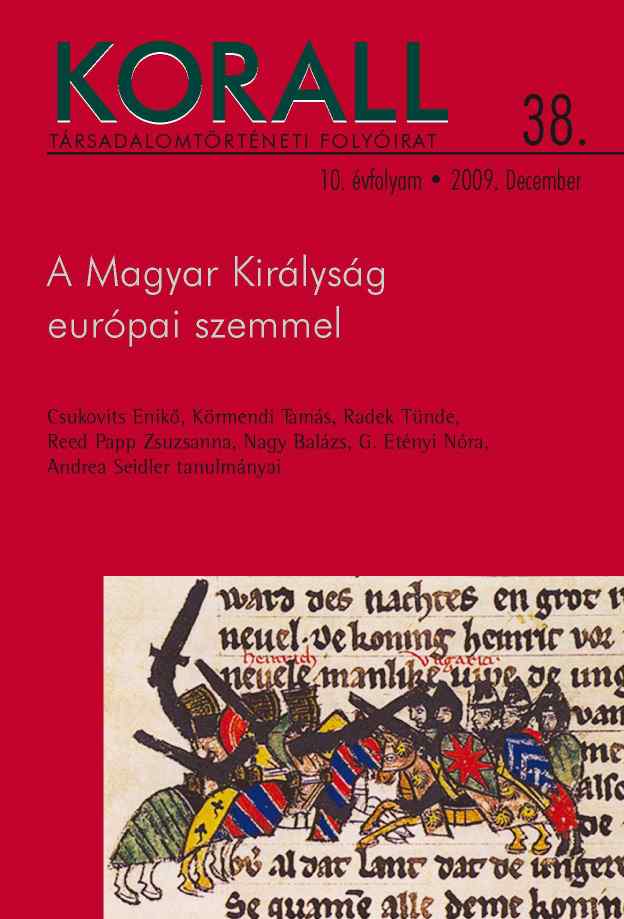Toposzok és újítások a kora újkori Magyarországképben 17. századi német nyomtatványok tükrében
Topoi and Innovation in the Early Modern Image of Hungary in the Mirror of Seventeenth-Century German Publications
Author(s): Nóra G. EtényiSubject(s): History
Published by: KORALL Társadalomtörténeti Egyesület
Summary/Abstract: The political, economic and military capacity of Early Modern Hungary, the battleground in the struggles with the Ottomans, was a definitive question for the contemporary European public. The interest in German pamphlets, historical and geographical gazetteers and travel accounts about Hungary is strongly tied to current military events in the Ottoman wars. The Habsburg Empire had vested interest in the dissemination of news to the widest public possible from the frontline of fighting against the common enemy, both through traditional and modern channels such as printed newspapers and illustrated newsletters. The lay and clerical centres of the Holy Roman Empire also actively participated in the propaganda about of the role of the Empire in the fight against the Ottomans. Parallel to this, the increasingly powerful public in the Empire was informed In detail about the economic, political and cultural assets, natural characteristics and resources of the territory at stake. Although the illustrated newsletters reporting on military operations, as well as printed pamphlets and weeklies, retained the topoi about the country’s treasures and customs, they were beginning to report about the political, military and cultural elite of the Kingdom of Hungary, the relations between the ruler and the Estates, the courts of higher nobility, towns of political and economic consequence, and the military significance of castles and fortresses, in an increasingly complex and informed manner. In the illustrated reportage of newsletters, the strategic position of castles was depicted by layouts, siege plans and maps prepared by military engineers, and they also contained recognisable and authentic portraits of nobles and major military commanders. It was in the publishers’ business interest to present a more intricate image of the castles and towns in the focus of attention in a growing number of genres providing valuable and captivating background information, such as calendars, historical treatises, chronicles, travel accounts, fairground pamphlets, and biannual diaries. Recognising the significance of printed press, Early Modern intelligentsia considered it important to interpret and organise the voluminous flow of information in hindsight; parallel to perpetuating earlier traditions, they also integrated new information into historical and geographical works. Under the spell of the new theory of the state, the reconquered territories in the war against the Ottomans were mapped, and the resources and opportunities of the Kingdom of Hungary assessed, in order to serve the best interests of the efficient running of the state.
Journal: Korall - Társadalomtörténeti folyóirat
- Issue Year: 2009
- Issue No: 38
- Page Range: 112-139
- Page Count: 28
- Language: Hungarian

